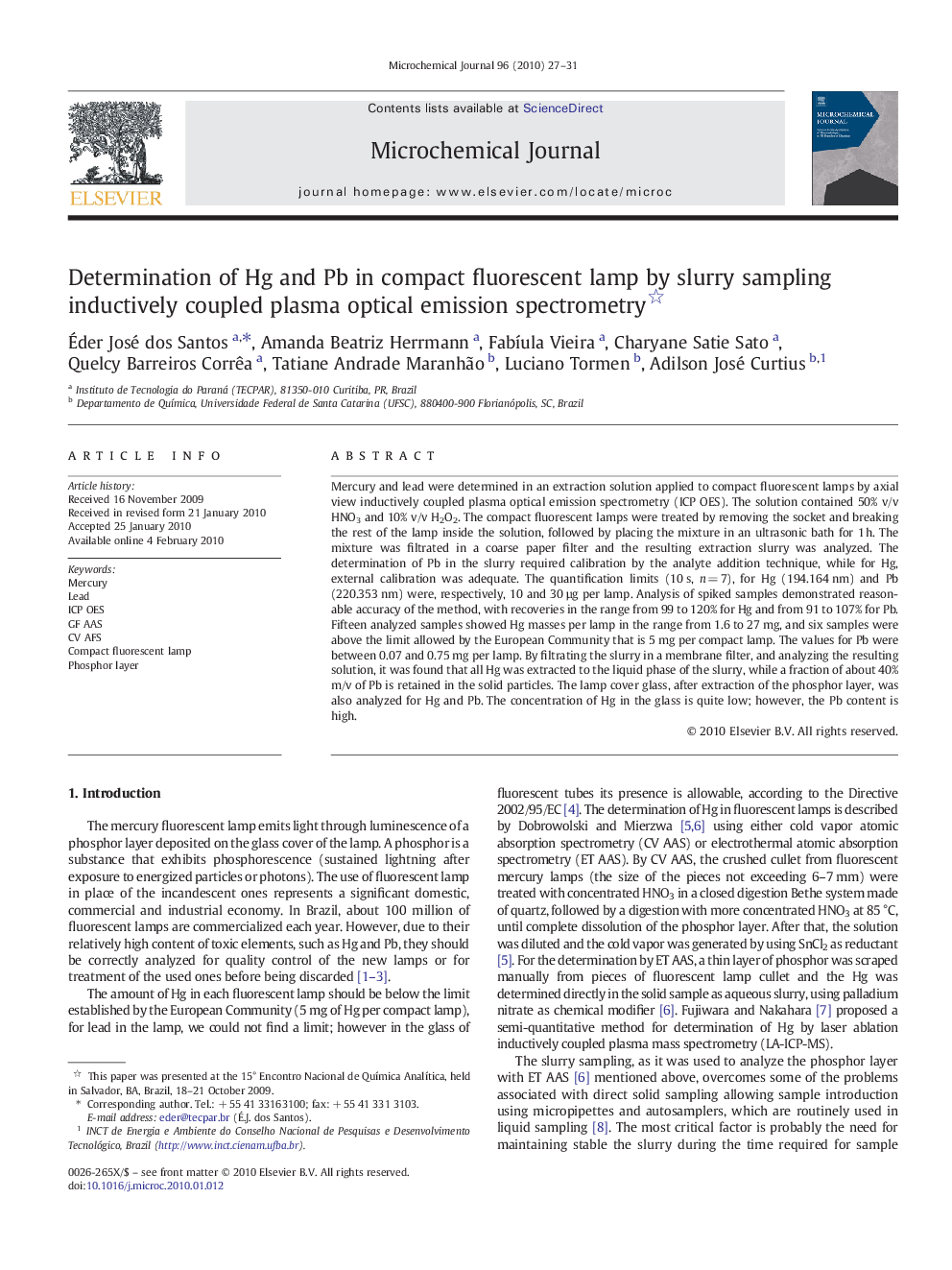| Article ID | Journal | Published Year | Pages | File Type |
|---|---|---|---|---|
| 1227819 | Microchemical Journal | 2010 | 5 Pages |
Mercury and lead were determined in an extraction solution applied to compact fluorescent lamps by axial view inductively coupled plasma optical emission spectrometry (ICP OES). The solution contained 50% v/v HNO3 and 10% v/v H2O2. The compact fluorescent lamps were treated by removing the socket and breaking the rest of the lamp inside the solution, followed by placing the mixture in an ultrasonic bath for 1 h. The mixture was filtrated in a coarse paper filter and the resulting extraction slurry was analyzed. The determination of Pb in the slurry required calibration by the analyte addition technique, while for Hg, external calibration was adequate. The quantification limits (10 s, n = 7), for Hg (194.164 nm) and Pb (220.353 nm) were, respectively, 10 and 30 µg per lamp. Analysis of spiked samples demonstrated reasonable accuracy of the method, with recoveries in the range from 99 to 120% for Hg and from 91 to 107% for Pb. Fifteen analyzed samples showed Hg masses per lamp in the range from 1.6 to 27 mg, and six samples were above the limit allowed by the European Community that is 5 mg per compact lamp. The values for Pb were between 0.07 and 0.75 mg per lamp. By filtrating the slurry in a membrane filter, and analyzing the resulting solution, it was found that all Hg was extracted to the liquid phase of the slurry, while a fraction of about 40% m/v of Pb is retained in the solid particles. The lamp cover glass, after extraction of the phosphor layer, was also analyzed for Hg and Pb. The concentration of Hg in the glass is quite low; however, the Pb content is high.
